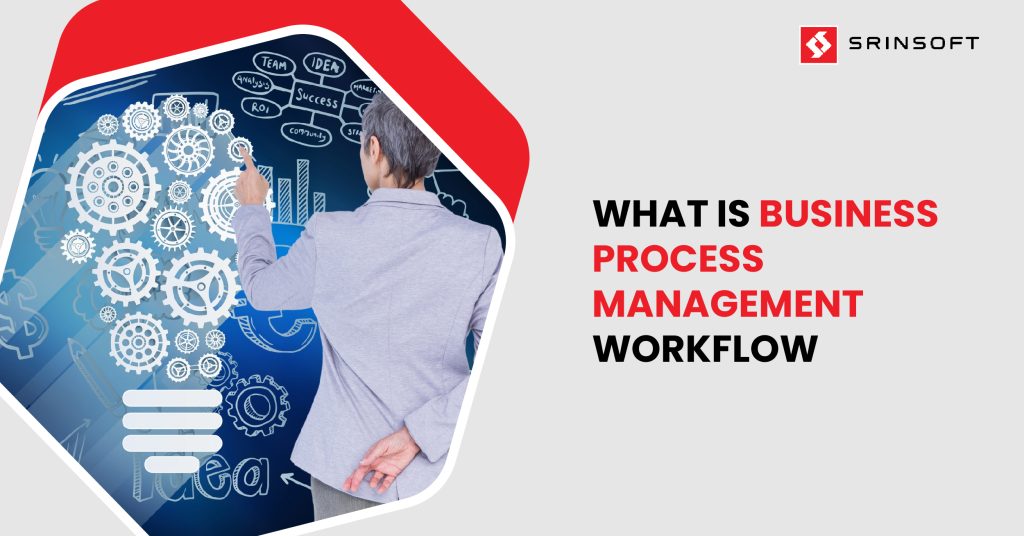
The Importance of Efficiency in Modern Business Operations
Organizations looking to remain competitive must deliver faster and in a more cost-effective way and be prepared for changes in the market while ensuring quality.
The key ingredient to achieve this is efficiency in operations. Efficiency is not simply doing things quicker it is rather about streamlining processes and eliminating redundancies from the system so that we can better manage existing organizational resources.
Inefficient operations frequently create bottlenecks, delays and errors that not only erode productivity but also customer satisfaction. Being efficient is truly the way that most businesses should operate to ensure they can scale efficiently, reduce waste and meet their goals more consistently.
Business Process Management (BPM) enables organizations to enhance operational efficiency by automating workflows, increasing visibility into processes and facilitating greater collaboration across departments.
By incorporating BPM, organizations can improve their operations, scale down the errors, and be focused on continuous improvement which is crucial for achieving long term success.
Understanding Business Process Management
BPM is a structured approach to making an organization’s workflow more effective and efficient. It has evolved from merely optimizing back-end operations to enhancing both customer and employee engagement in the current digital milieu.
Due to its ability to improve production, smooth out operations and remove inefficiency, BPM is invaluable to organizations. It helps organize a structured view of how information and resources are flowing in an organization which leads to better coordination and achieving the intended objectives faster.
BPM is an essential method to manage workflows as well as streamline, automate, and optimize business operations in a structured way. BPM connects tasks, people, and systems so that workflows are executed efficiently and oriented towards organizational objectives.
By leveraging BPM, workflows can be designed and tracked to get rid of bottlenecks, reduce manual tasks, and bring consistency across processes.
With tools like BPM software in place, manual tasks can be automated, data flow can be handled seamlessly and facilitate real-time monitoring to ensure that business can adapt to changing needs.
The convergence of better decision-making, compliance and continuous improvement are some of the compelling reasons to use BPM for managing complex workflows.
Difference Between Process and Workflow in BPM
BPM views processes as overarching frameworks, while workflows are the individual steps that make up those processes. Both are essential for effective business management and automation.
| Process | Workflow | |
| Definition | An organized set of activities that must be executed to achieve a business goal. | The sequence of steps or tasks that automate the movement of work between people, systems, or data points |
| Scope | Focus on broader business goals and how the activities link back to those overarching objectives. | Focus on specific steps within the process and offer details on how work moves from one stage to another. |
| Complexity | A process is often far more complicated and entails numerous workflows, departments, or teams. | Workflow is usually simpler and specific to a particular task or set of tasks within a process. |
| Goal | To optimize business functions and improve overall efficiency and productivity. | To streamline task execution and ensure proper handoff between different participants or systems. |
| Flexibility | More rigid as it aligns with broader business objectives and requires strategic alignment. | More flexible and can be modified as needed to eliminate bottlenecks or improve efficiency. |
| Timeframe | Longer-term, with a focus on continuous improvement over time. | Short-term, focusing on task completion within a specific process. |
Key Stages of BPM
BPM offers a formalized methodology for optimizing and continually improving an organization’s business processes. This is generally broken down into a few important stages: design, modelling, execution, monitoring and optimization.
Each phase takes the previous one as its foundation to optimally manage processes across the organization and orient them towards strategic company goals.
During the Design period of BPM, companies define targets and analyze present processes to design workflows by using tools like BPMN or ARIS. This aids in the identification of inefficiencies, which allows for continuous improvement or a redesign.
Deciding the ideal future state of processes requires input and consensus from stakeholders.
At the Modeling stage, tools such as Pega or Camunda are used to create a visual representation of a process workflow and simulate processes under different conditions.
This provides insight into where improvements and automation efforts could help whilst allowing for even swifter decisions before full implementation.
Execution is the stage where businesses execute and test processes, sometimes with the help of BPM tools to automate tasks. Change management will have a great role to play here ensuring an easy transition plan, proper training and resolving stakeholder concerns.
In the Monitoring stage, Key Performance Indicators (KPIs) are tracked to assess the efficiency of the process. Besides, it helps us to identify the bottlenecks and align processes with the business objectives.
BI tools are used here which allow businesses to assess their performance and draw conclusions for improvement.
The Optimization stage focuses on continuous improvement where processes are optimized with the help of input from the monitoring phase. In this phase, workflow optimization is carried out while bringing in automation and eliminating inefficiencies to save costs and improve output quality.
Benefits of Implementing BPM in Workflows
BPM plays a key role in improving workflows by providing a systematic way to manage and enhance business operations. Here are some of the notable benefits of incorporating BPM in workflows.
Improved Organizational Clarity
A BPM-based workflow specifies a sequence of activities that includes both the individuals responsible for them and the order in which tasks must be completed.
It increases organizational clarity and creates a more easily executable workflow like purchase approval, customer support request or invoice processing.
End-to-End Visibility and Process Alignment
BPM provides end-to-end visibility into processes, offering businesses full control over the flow of tasks, data and information across all departments and systems.
Unlike an individual workflow which is limited to a set of tasks, BPM covers the entire process and incorporates organizational goals, resource deployment as well as customer requirements.
Integration of BPM into workflows consequently streamlines processes, eliminates duplicative steps and ensures consistency in product quality.
Increased Efficiency, Accountability and Scalability
Workflows in conjunction with BPM provides several advantages such as efficiency improvements, accountability and the facility to scale your processes. With BPM,employees can perform their roles without delays and errors and a clear demarcation of roles leaves no room for confusion.
In addition, as companies scale and complexity become greater, organizations can also scale workflows using BPM. Over and above, having BPM in place also enables effective continuous improvement and makes it easier to track performance.
Operational Efficiency, Compliance and Risk Reduction
Moreover, BPM in workflows helps in achieving compliance by including regulatory methods, removing risks and promoting a practice of conformity.
Inefficient processes are frustrating for staff and clients alike, so the optimization of process speeds not only reduces frustration but increase potential satisfaction with products or services.
In the end, BPM in workflows enables businesses to have greater flexibility, lower operational costs and better profitability.
Conclusion
Efficient workflow management is the key to growth, and SrinSoft knows how managing and streamlining operations can become complex for organizations. With a deep understanding of BPM best practices, we are equipped to help you overcome these challenges.
Through automation and workflow optimization, SrinSoft enables its clients to increase the efficiency of their operational and decision-making processes.
Whether improving existing workflows or building a BPM framework from scratch, SrinSoft has the expertise to ensure that your organization will benefit from sustainable process improvements and increased agility in a competitive landscape.


